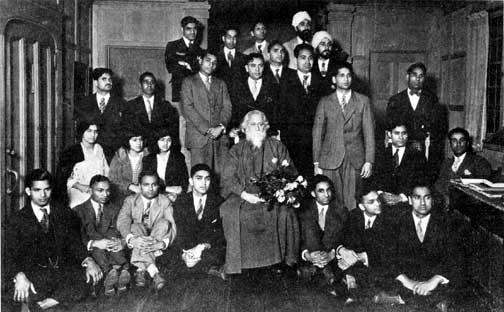A unique concert of Tagore songs with the accompaniment of Indian and Western musical instruments is planned for Saturday, July the 18th, 2009, at 6-30 P.M. at the fabulous sanctuary of the futuristic Saint Peters Church in the heart of New York City at 619 Lexington Avenue (corner of 54th Street), New York City. Rezwana Choudhury Bannya, the famed Tagore singer, will be the solo vocalist. Among the instruments will be Piano, Violin, Saxophone, Harp, Cello, Veena, Sitar, Flute, Tabla, Mandira etc. The musicians who will play these instruments are all accomplished artistes in their respective areas. This is the first time that such a concert is being offered where so many Western instruments will be played with Tagore songs (or any other Bengali song genre, for that matter) at the same session. As planned, Ms. Bannya will sing an average of two songs with each instrument individually. At the end, two or more songs are expected to be offered with all the instruments playing together.
Suggested donations for the concert has been set at $100, $50 and $25, to defray the costs for the concert. Guests are requested to arrive on time and take their seats by 6-30 pm so that the session may start on time. The entrance is through the 54th Street south side doors, less than 50 feet from Lexington Avenue while walking towards Third Avenue. Discount parking is available at Metropolitan 51 Parking, 569 Lexington Avenue, south side of 51st Street, between Lexington and 3rd Avenue ($15 for upto five hours).. For getting the discount, the tickets have to be endorsed by a seal at the reception desk at the church entrance.
Those interested to attend the concert and collect tickets are requested to ontact: 347-570-7787, 917-770-0146, 718-414-9743 or send email at following adresses:
email: smullah41@yahoo.com, sarwarharun@gmail.com
 About a year and half ago, when I was researching on Rabindranath Tagore’s visits to the USA, an incident caught my attention. It said, that apparently there was an assassination attempt on Rabindranath by some Indians during his visit to San Francisco in October of 1916. This piece of information shocked me to say the least and I started to dig into the matter further. I looked into several books on Tagore by well regarded scholars and slowly an image started to take shape. I’ll refrain myself from getting into the details of the various accounts published in several books (you may look for them in the attached bibliography), but just to put matters in context I’ll quote some references: Continue reading
About a year and half ago, when I was researching on Rabindranath Tagore’s visits to the USA, an incident caught my attention. It said, that apparently there was an assassination attempt on Rabindranath by some Indians during his visit to San Francisco in October of 1916. This piece of information shocked me to say the least and I started to dig into the matter further. I looked into several books on Tagore by well regarded scholars and slowly an image started to take shape. I’ll refrain myself from getting into the details of the various accounts published in several books (you may look for them in the attached bibliography), but just to put matters in context I’ll quote some references: Continue reading  About a year and half ago, when I was researching on Rabindranath Tagore’s visits to the USA, an incident caught my attention. It said, that apparently there was an assassination attempt on Rabindranath by some Indians during his visit to San Francisco in October of 1916. This piece of information shocked me to say the least and I started to dig into the matter further. I looked into several books on Tagore by well regarded scholars and slowly an image started to take shape. I’ll refrain myself from getting into the details of the various accounts published in several books (you may look for them in the attached bibliography), but just to put matters in context I’ll quote some references: Continue reading
About a year and half ago, when I was researching on Rabindranath Tagore’s visits to the USA, an incident caught my attention. It said, that apparently there was an assassination attempt on Rabindranath by some Indians during his visit to San Francisco in October of 1916. This piece of information shocked me to say the least and I started to dig into the matter further. I looked into several books on Tagore by well regarded scholars and slowly an image started to take shape. I’ll refrain myself from getting into the details of the various accounts published in several books (you may look for them in the attached bibliography), but just to put matters in context I’ll quote some references: Continue reading 



